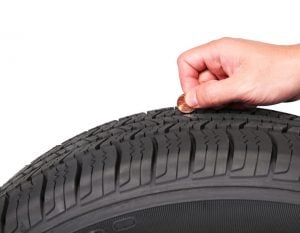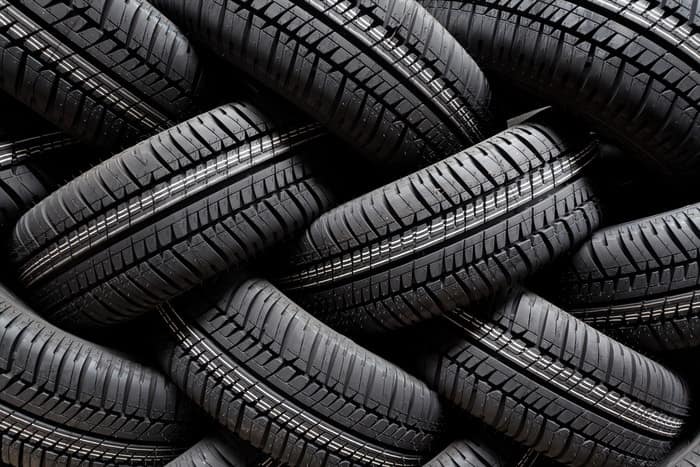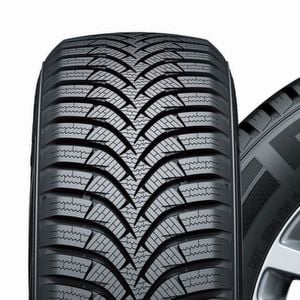Last Updated on 24.08.2023 by hrushetskyy
Tire maintenance is one the most important things car owners should keep in mind to prevent accidents. However, although we know the importance of tires for that safe ride, some might not know enough when to tell that the tires already need a replacement. But buying a new set can be expensive, which brings us to the question: are used tires okay to buy?
Tires, when left unchecked, could seriously cause accidents. Two years ago, data showed that defective car tires due to poor tire maintenance are the leading cause of accidents in Britain.
Consumer Reports also cited a study by the National Highway Traffic Safety Administration (NHTSA) showing that nine percent of vehicle crashes are tire-related. Bad tires, particularly those that are worn out and underinflated, and bad weather conditions make a perfect combination that could lead to a road accident.
Before you find yourself in a situation where you could not rely on your tires for maneuvering anymore, you better replace them.
New tires offer more mileage, but oftentimes, its cost breaks the bank. A new set of tires ranges between $400 and $1,800 and we know that it could also spell untold damage to the environment. You might want to consider getting yourself recycled rubber. But are used tires good to buy?
Are used tires worth buying?

Used tires have their own advantages and disadvantages. The trick is to know when to tell that a used tire is still in good condition.
Remember, used tires are not anymore subject to any legal standard as the process of collection, inspection, and returns to the market vary widely. This also contributes to the proliferation of unsafe used tires in the market, which makes it harder for the car owners to get the best option.
You need to check thoroughly whether you can still use it for a long period of time or whether it will just lead you to trouble. Before you even consider buying used tires, check out your these issues to address the question of whether used tires are safe to buy:
The depth of tread
The depth of tread is the vertical measurement between the top and the bottom of the rubber pattern on the tire. A study shows that more accidents happen when the tread depth is below the minimum.
You can measure the tread depth with a gauge. A penny test will help you check whether the tire’s tread is still usable. When you insert a Lincoln penny and a good chunk of the coin is visible, it’s a good bet that the thread is about 2/32 inches. You are essentially violating safety measures in most states. You must remember that the depth of tread should never fall below 1/16 of an inch or 1.6 millimeters. You can learn more about the tread here.
- Cuts and bumps in the sidewall
If the depth of tread of a used tire still looks good, you need to check the entire surface of the tire for visible cracks or cuts in the sidewall.
If the sidewall has bumps or other irregularities it’s also unsafe to use as an impact might have forced the rubber to delaminate from the belts. You could also check for irregular wear that might expose the steel cords inside the tire. If there are some of it sticking out, that get it replaced.
- Bead area damage
If you see missing chunks of rubber or other damage at the tire’s bead areas that might prevent it from sealing properly, then it’s unsafe to use. The bead area is the inner circle of the tire that connects the tire to the wheel and holds it together.
- Liner damage
Signs of damage at the liner of the tire, such as a stripe of wear around the sidewall that appears softer or presence of rubber dust, which indicate that the tire is unsafe for driving. Inspect the tire’s liner for either damage or expose cords as this could cause rubbing of the sidewalls.
- Big punctures
Check out your car for punctures that have already been repaired. You may have forgotten about it but be careful of repaired punctures within an inch of either sidewall.
- Aging tire
Tires today show a four-digit number that indicates its age. The first two numbers show the week when it was made and the last two digits represent the year.
For example, a tire with a DOT code of 1208 was made in the 12th week of 2008. Know your tire’s identification number found on the sidewall of the tire. If you cannot see it any more chances are it’s unsafe to use and you should look for other signs mentioned above to help you decide whether you should replace them or not.
- Excessive vibration when driving
Do you feel irregular and excessive vibrations when driving? Normal vibration could happen due to the road surface. However, if there are still vibrations despite running on better road surfaces you might need to check with your auto repair shop if you should get your tires replaced.
These issues will serve as guideline in what you should look out for when buying used tires.
Are used tires safe to buy?
Used tires that are already worn out is accident-prone. That’s why you need to educate yourself on how to tell whether a used tire is still safe to buy or not. Others will encourage you against buying used tires even if they themselves cannot tell whether it’s still in good condition or not.
Using the guidelines discussed above, you could determine whether a used tire is still safe to use. Of course, you can also deal with reputable companies like United Tires in Chicago, which inspects and test used tires for safety before selling them off to customers. At the very least, state laws prohibit the selling of used tires that fail to meet the minimum standards of safety.
Uneven wear and tear patterns, damaged sidewall and liners, insufficient tread depth, excessive vibration, and aging tires are red flags that will help you address the main question: “Are used tires okay to buy?”
Buying used tires that are in good condition can give you somewhere between 40 percent and 70 percent tread depth left — that is a long mileage that comes at a significantly low price.
Some tires are still in good condition because repair shops often recommend changing tires prematurely. Then they get a disposal fee for keeping the tires in the shop and they are also allowed to resell the used tires.
Car manufacturers also convince car owners to replace their tires before they are worn out. There are also tires that were taken from accidents or natural disasters but are still very much in good condition.
The dangers of buying worn-out tires
All you need to have is the keen eye for tires that are worn out or in good condition. A bald tire will expose you to a lot of risks. Here are some of them:
Loss of hydroplaning resistance
Hydroplaning is the loss of traction and sliding on a film of water, which usually happens in wet road surfaces. Tires have ribs and grooves to allow the car to maneuver on wet surfaces while keeping traction.
If the depth of tread is below the minimum then it has lesser ability to keep traction and makes it harder to steer. Aside from worn-out tires, a puddle of water on the road, under-inflated tires and car speed also cause hydroplaning. This problem is visible in tires with a tread depth of around 5/32 or 4/32.
Loss of grip in snow and ice
Winter tires with 5/32 or 6/32 tread depths may lose their optimum performance as the smaller groups, also called “sipes” become shallower. Sipes allow the tires to get a good grip during winter. It provides strong traction but with wear and tear, sipes can also wear out causing difficulty to hold the tire to snowy or icy pavements.
Tire heating
Insufficient tread depth also causes tire heating as there is lesser space for air to flow between the grooves to cool the rubber during the friction.
Loss of air pressure
Worn out tires damaged by sharp debris can lead to excess air loss, under-inflation, and a flat tire.
How Long Do Used Tires Last On Average?

The lifespan of a used tire is difficult to tell because it depends on several factors including the age, tread wear, damage and repairs, and maintenance. Used tires normally last from two to five years if it were bought in good condition. That’s why buyers need to have the basic know-how on what a good tire looks like.
Look closely at the age of the tire indicated on the rubber. There are car manufacturers who recommend car owners to replace their tires every six years after the date of production.
But some carmakers say regular annual tire inspections after the fifth year of your car may last it up to 10 years. The key things here is regular maintenance.
According to the Rubber Manufacturers Association, there are several factors that dramatically reduce the lifespan of tires even when you are guided by its production date.
The factors include heat, the way of storage, and treatment of the tires. The NHTSA said tires in warmer climates age quickly. The exposure to dirt or heat inside the trunk of spare tires may also add to its aging. Lastly, the proper treatment of tires matters a lot. Tires that are not overused will have a different aging pattern than those that are used daily on the highway or rough roads.
Here are some ways how your tires could get cracks, cuts, and other damages:
- Obstacles and curbs along the roads
- Extreme temperatures
- Exposure to harmful chemicals
- Hard cornering, sudden brakes or rapid speed acceleration
- Under and over inflation
- Running on a flat tire
- Improper use
- Lack of tire maintenance
How Much Should You Pay for Used Tires?

The cost of used tires will go somewhere between 30 and 50 percent of their original price.
However, this would depend on several factors, including initial price, tire type, tread, age, and the number of tires bought. Some used tires cost between $25 and $160. Used tires from known car maker brands might fetch a higher price compared to other brands.
The price of all-season tires, snow tires, and performance tires also differ. Older used tires and those that you bought as a full set also cost cheaper. You may also pay a separate fee for delivery, mounting, and balancing.
Sell your old tires
Cashing in on your used tires is also a great idea to raise money for the replacement tire that you should buy. You might want to consider to a retreading shop.
The price of used tires could be between $25 and $75 each or $100 and $300 for a set. Still, you need to do some research by visiting shops or garage that sell used car tires to give you more room for haggling and negotiation.
If your used tire is really not meant for the road anymore, you may turn it into a recycled swing for a playground or a neighbors’ backyard. They might be someone who is more than willing to pay for your handcraft. The planet will even thank you for it. Rubber tires can be recycled saving the landfill more space and reducing injuries.
Here are some of the benefits of recycling rubber tires:
- An average of one gallon of petroleum oil is saved for every tire that uses 10 percent recycled rubber;
- Every pound of recycled rubber that replaces synthetic rubber will prevent a pound of carbon dioxide from exiting to the atmosphere;
- Lesser scrap tires will help reduce the spread of viruses carried by mosquitoes as these rubber tires become breeding ground for mosquitoes in many communities;
- Prevention of tire fires; and
- Prevention of accidents in landfills where compressed tires tend to rebound to the surface causing injury to workers.
- The question of are used tires safe to buy has been sufficiently answered but with a caveat. You have to deal only with a company with an established reputation for quality.
Used tires clearly have no warranty compared to new tires. But wise buyers could still trade for used tires that are in good condition. Making the right choice could help you save money, and be a hero to the environment at the same time.
Share the Knowledge
